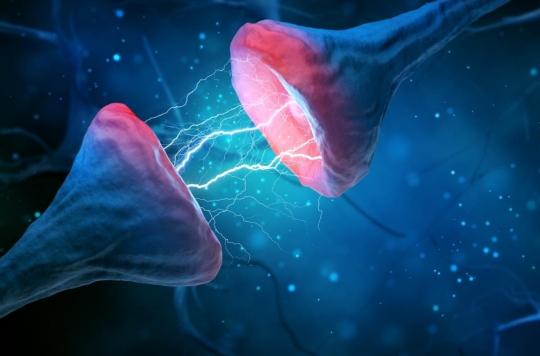Inhibitors would protect the cells of the nervous system, and prevent the process of cell death.

- A receptor involved in the connection between neurons could in some cases play a deleterious role on brain cells
- This discovery could facilitate the development of treatments for neurodegenerative diseases
Degenerative diseases are chronic, progressive and incurable pathologies. They affect the central nervous system. Today, the only treatments available only relieve the symptoms, and they are not effective for all patients. Researchers from the University of Heidelberg in Germany are working on a new therapeutic avenue. They explain it in a study published in the journal Science.
Protective receptors that become destructive
The research team focused on the process of neurodegeneration: that is to say the death of cells in the nervous system. In the brain of laboratory mice, they analyzed the role of the NMDA receptor: it is activated by glutamate, a neurotransmitter and allows calcium to enter cells. This receptor has a fundamental role because it is located at a junction between different neurons, called synapse, whose role is important for the process of memorization and learning. But some of these receptors are located outside these areas, and when they activate, they can cause cell death. In the absence of pathology, the body prevents the activation of these receptors, but in the case of degeneration, this is no longer the case. The NMDA receptor changes from a protective role inside the synapses to a destructive role outside. “They transform from Dr Jekyll to Mr Hyde”compare the researchers.
Conclusive tests on mice
For Hilmar Bading, director of the study, it is certain that the toxic properties of the NMDA receptor have a “central role in many neurogenerative diseases”, in particular in the case of Alzheimer’s disease and Charcot’s disease. “Understanding why NMDA receptors located outside of synapses lead to cell death is key to developing neuroprotective therapies.” The analysis carried out on mice allowed him to show that a protein, called TRPM4, confers these toxic properties on NMDA receptors. With his team, they found an inhibitor, called “interface inhibitor“, capable of interrupting the link created between the receptor and the protein, and thus preventing the phenomenon of cell death. The test carried out on animals has proven its effectiveness, and gives hope to researchers of a curative treatment against neurodegenerative diseases.”Nevertheless, their authorization as a medicine for humans will take several more years, because this new substance must first pass several phases of pre-clinical and clinical trials.concludes the researcher.

.














